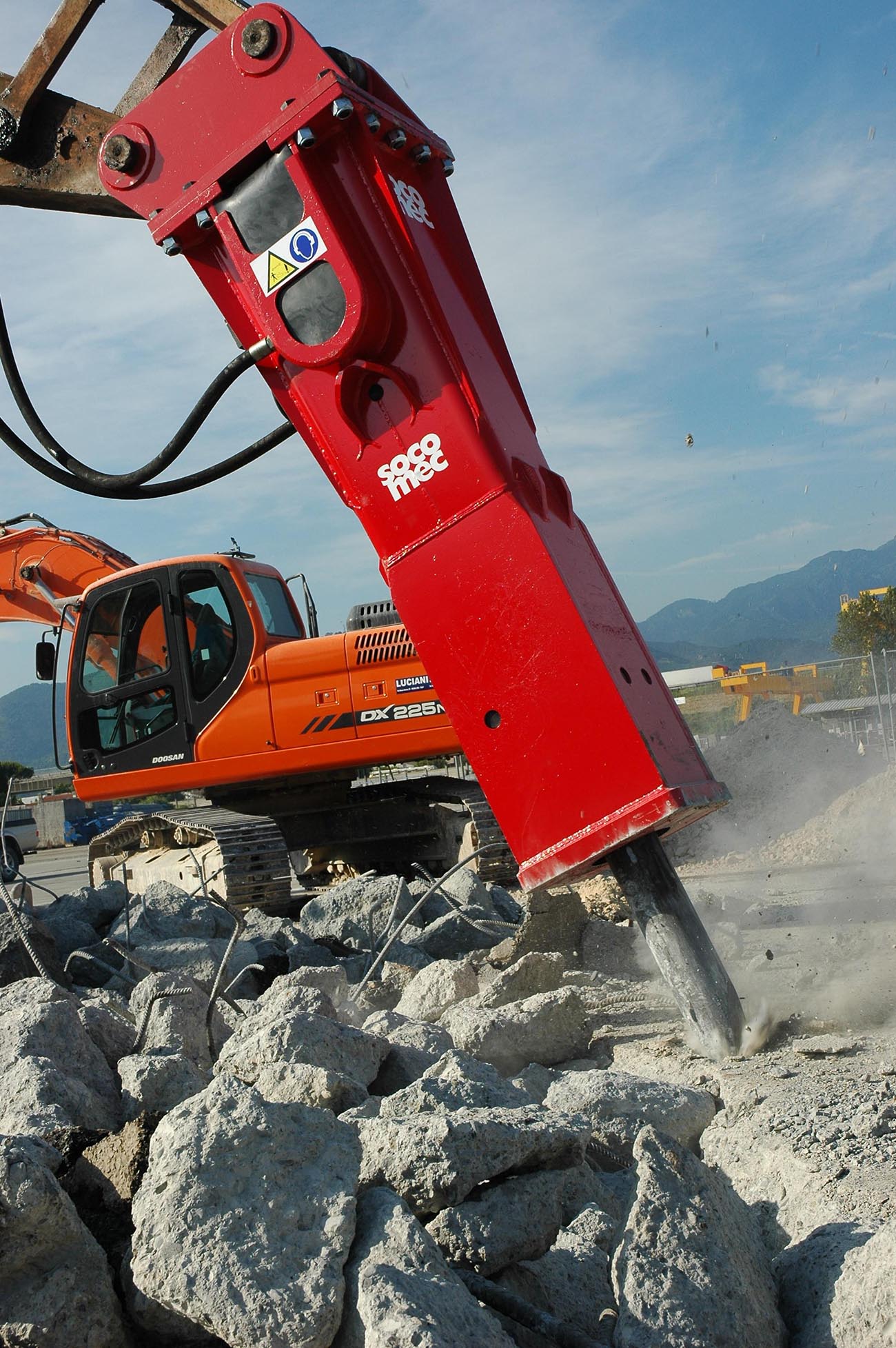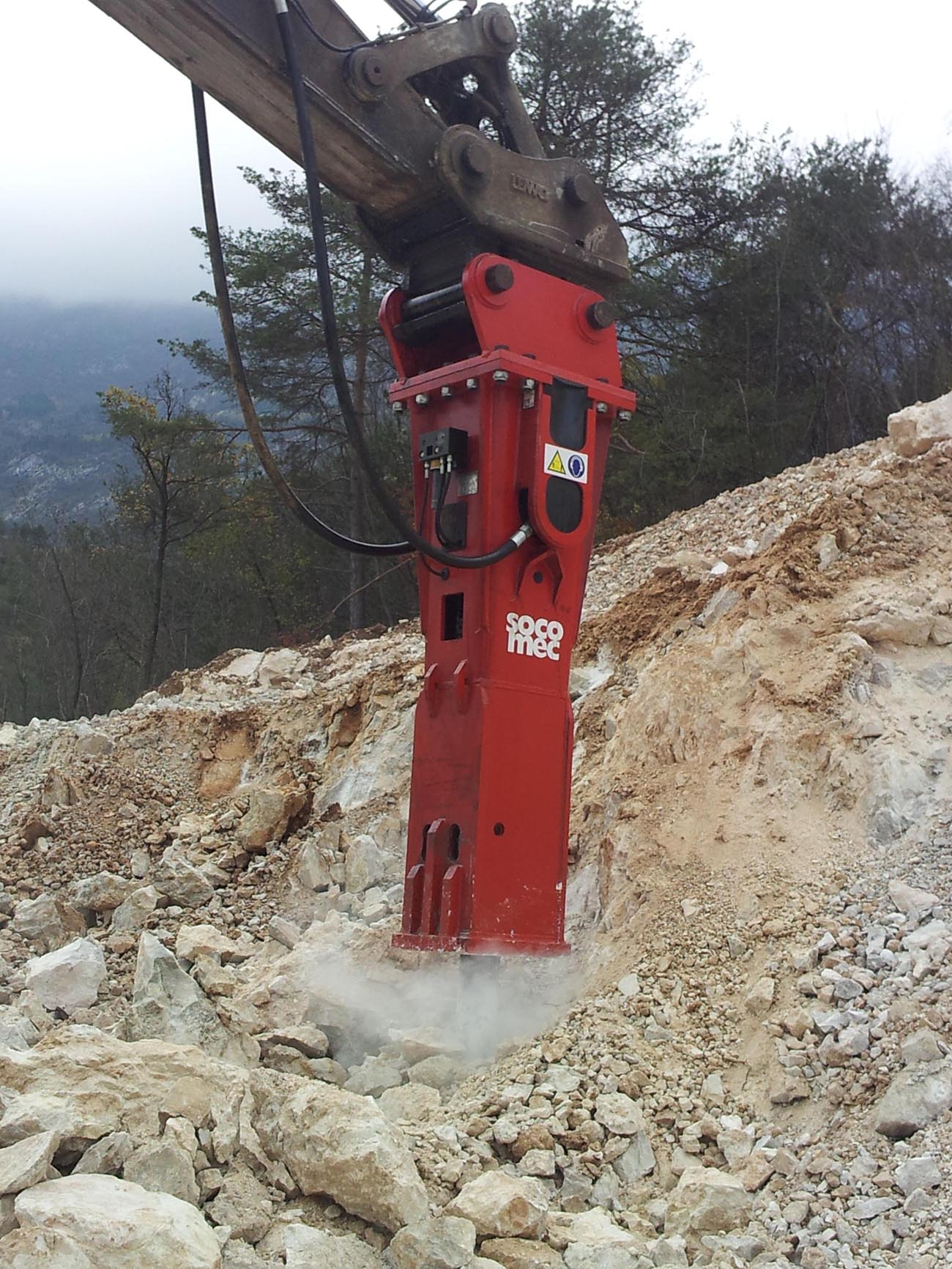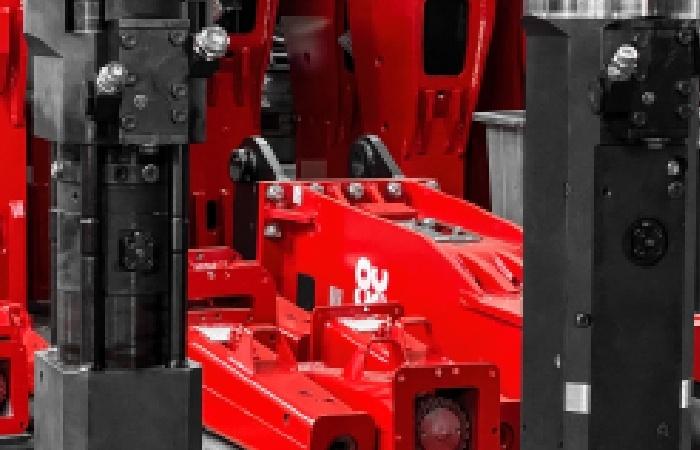Introduction
A Rock Breaker, which may also be known as a hydraulic hammer, or hydraulic breaker, is an attachment designed to break the earth and shatter rocks into smaller, more manageable fragments. Rock breakers are generally attached to an excavator, and they may often compliment the use of a crusher attachment to downsize rocks that are too big for the crusher to break. Commonly used in the mining, demolition and landscaping fields; rock breakers can assist in a number of applications, such as rock excavating without the use of blasting, or secondary rock crushing. Here at Contatore Engineering, we offer the Socomec Rock Breaker range. These breakers are manufactured in Italy in a world-class facility, and are backed by almost 50 years of research and development. Having been partnered with Socomec for over 15 years, we have witnessed them progress from strength to strength; demonstrating constant innovation in the field and applying patented technical solutions.
The Rock Breaking Process Explained
Overview
In simple terms, a hydraulic rock breaker uses pressurized oil to produce great amounts of energy which powers the breaking sequence and smashes the rock. In the Socomec Rock Breaker range, an energy recovery system has been implemented so that some of the oil already used can be directed back to the pressure chamber and spent on the next stroke. This system increases the breaker power and productivity without drawing further energy from the excavator.
Components of the Breaker
Hydraulic Rock Breakers usually come under one of two types; internal valve type (featured in our DMS Rock Breaker range) and external valve type (commonly seen in our MDO Rock Breaker range). Both valve types include a front head to support the breaker and a back head which holds the nitrogen gas. This chamber filled with nitrogen gas also works to absorb some of the shock of the return piston stroke, and then boosts the impact of the piston as it travels back down. They share many of the same components and mechanisms, including the cylinder (a key component of all rock breakers) and piston. The piston is crucial in a rock breaker as it must transform the energy being produced by the pressurized oil in the chamber into hammering energy. Socomec has designed a long stepped section piston that delivers a very powerful impact to the tool and has also incorporated special dust proof protection on the lower part of the piston.
Summary of the Technical Process of Breaking Rock
As explained extremely well by The Australian Expert, WordPress “The breaking process of a hydraulic rock breaker starts with opening the in-port that allows high-pressure oil to act on the chamber. The piston is forced to move upward, compressing N² gas in the back head. When the piston is moving upward, the oil passage is getting opened and oil is flowing into the chamber. The upper force is greater than the down force and the valve spool is moved upwards. As the valve spool is rising and the oils passage is getting opened, the nitrogen gas pressures down the piston. The whole pressure is transmitted to the tool (also known as a chisel), which uses the hammering energy to break rocks. The accumulator is used to immediately compensate the lost pressure from the creating of hammering energy”. This adeptly summarises the technical process that occurs within a rock breaker when beginning to breakdown rock, and is worthwhile to know when deciding to purchase and begin using your breaker.
Rock Breaker Features to prolong the life of your attachment and machine
Socomec Rock Breakers use a sealing system to ensure the internal components are protected from debris and wear. Three seal rings between the cylinder lining bushes and the piston and further seals between the lining bushes and the cylinder offer excellent protection from oil leaks. Low friction type seals are used which do not overheat and have a long service life. A large wiper seal on the tool keeps dust out of the lower chamber and helps to keep grease inside the breaker, which also works to reduce noise levels. For added safety, Socomec Rock Breakers and any other reputable breaker will come with shock absorbers (also may be called buffers) fitted on the upper part of the breaker. Socomec breakers have a double damping system; put simply, this design creates a perfect hydraulic balance of the moving parts, avoiding all possible breaker recoils. Shock absorbers are built into the breaker frame above and below the breaker to avoid transmitting micro vibrations to the excavator arm or construction equipment to which the breaker is attached (Such as skid steers, backhoes or stationary plants).
Special Features of Contatore’s Socomec Rock Breaker Range
Apart from the features mentioned above, these are some of the additional features you can enjoy should you choose to acquire a Socomec Rock Breaker; which comes in a light to medium range, and a medium to heavy range. They provide breakers to suit 0.7 tonne excavator machines up to 100 tonne excavator machines.
- The DMS range (Breakers ranging from 0.7 tonne to 47 tonne capacity) is manufactured as a sole piece made from a fully forged rod; sporting the huge advantage of having eliminated the tie rods, the main issue often encountered with traditional breakers.
- MDO Series (Breakers over 47 tonne capacity and up to 100 tonne capacity): In the Socomec construction, the piston is not directly in contact with the cylinder but it slides in a series of guide bushings. When resealing is necessary, it is possible to remove the piston and bushings without loosening the breaker tie-rods. This cost-saving design is exclusive to Socomec.
- Socomec breakers may be used for underwater and underground applications. For underwater or tunneling applications it is possible to pressurize the stroke chamber.
- Low noise. The innovative soundproofing system reduces noise by approximately 50%. This is achieved by using special guide and coating plates that completely isolate the breaker from its frame.
- Much simpler and economical to service than traditional counterparts.
- All Socomec breakers have a hydraulic braking system, which helps to eliminate blank strokes.
- The MDO and DMS (from 11 tonne) series have an automatic greasing unit fitted to the rock breakers with no other connections required.
- Socomec breakers deliver the highest productivity in any material. This is achieved by variation of the blow frequency and impact energy. The breaker reacts to the resistance of the material to be broken and is designed to work always at maximum efficiency.
Rock breakers are fairly simple in purpose, but as described above there are many factors and components in play to consider. That is why we want to equip our customers with as much knowledge as possible so they can rest assured they are in great hands and make better informed decisions regarding the equipment they decide to purchase. Only trust qualified rock breaker technicians when choosing or servicing your breaker; having this expert advice can be the difference between a breaker that lasts you a year or a decade.
The Contatore Engineering team are always on hand to help and can be contacted for any further information or enquiries.



